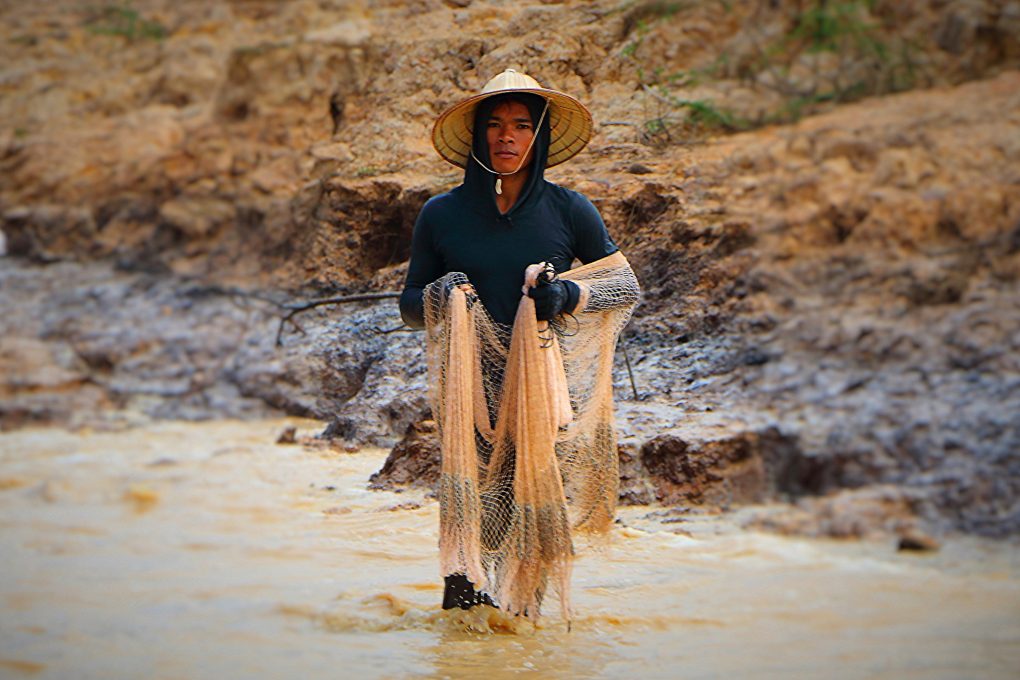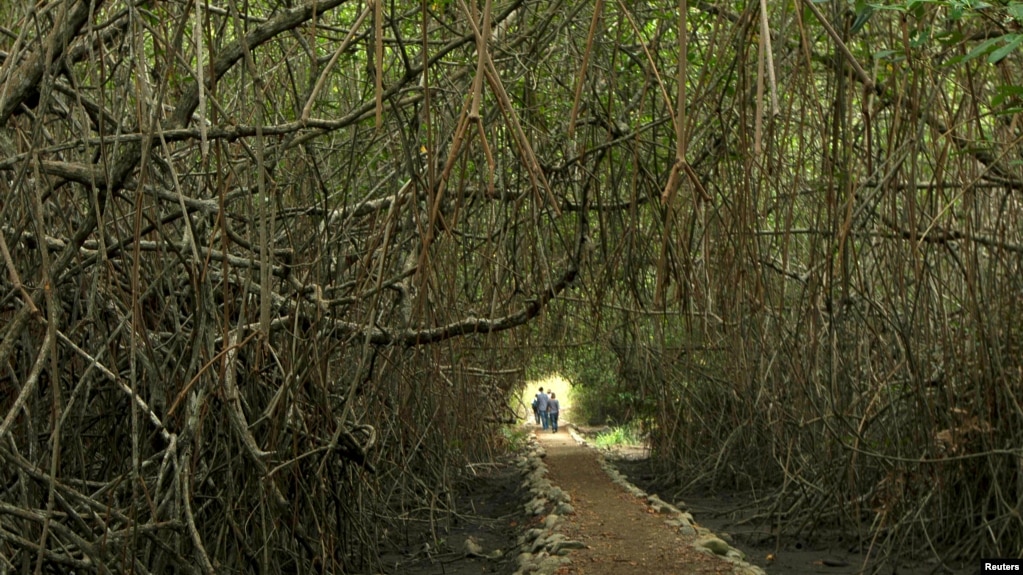|
The MAP News |
|
|
FEATURE STORY
MAP posts Endangered Species Associated with Mangroves list
USA - The IUCN Red List of Endangered Species lists most flora and fauna into seven categories ranging from “Least Concern” to “Extinct”. These categories are based on the current population of the species, the population trend (whether it is increasing or decreasing and how rapidly) and the threats faced by those species. Hunting, habitat loss/degradation and climate change are the three biggest threats to the natural world and these problems are increasing the number of endangered species rapidly. Some of the species associated with Mangroves range from “Vulnerable” to “Critically Endangered”. The list covers fauna that rely on mangroves for either all or part of their lives as well as flora that are part of the Mangroves themselves. Many of these species are closely associated with each other and interlinking ecosystems, meaning the loss of one species can have devastating effects on another. The loss of flora and fauna species and biodiversity is yet another reason why protecting mangrove habitat is so important. READ MORE. AFRICA Protecting Tanzania’s mangroves  TANZANIA - Lush mangrove forests line the meandering channels of the Rufiji River Delta, south of the commercial capital Dar es Salaam on the east coast of Tanzania. It’s one of the largest mangrove areas in Africa, and like mangroves everywhere, they’re under threat. Mangrove trunks are being cut for timber, poles and burned for charcoal; meanwhile, trees are being cleared to make way for rice paddies. Tanzanian law strictly protects mangroves given that they are the property of the State. Though the government initially encouraged people to settle in the Delta in the early 1970s, strict protection means local women aren’t supposed to collect firewood from the forest (though they often do) and every December through January since the 1990s, agents from the Tanzanian Forest Service (TFS) have burned farmers’ temporary stilt huts (madungu) and new rice farms, in an attempt to discourage further deforestation. READ MORE ASIA Mekong fisheries threatened by Chinese dams  CHINA - Large dams on the Mekong River in China’s Yunnan province have considerable impacts on downstream river flows. This is shown by new research by myself and colleagues at Aalto University in Finland, and published recently in the Journal of Hydrology. The Mekong originates in China where it is known as the Lancang, before flowing through Thailand, Laos, Cambodia and Vietnam. China has built a cascade of six hydropower dam projects on the upper reaches of the Mekong River. The first project, known as Manwan, (1,670MW), became operational in 1993 and the latest, known as Nuozhadu (5,850MW), began operations in 2014. The cascade has the capacity to produce 15,000MW of power and store over 23 cubic kilometres of water, 28% of the annual river flow at the border of China and Thailand. Downstream countries are also exploiting their hydropower resources, with Laos recently announcing it will start construction of a third contentious dam on the Mekong. READ MORE China leads world in efforts to protect biodiversity, ecosystem CHINA - China has gone further than any other country in bringing the science and economics of the environment into decision-making, and its efforts are a model for the world, said an environmental scientist at Stanford University. "In the face of deepening environmental crisis, China has become very ambitious and innovative in its new conservation science and policies and has implemented them on a breathtaking scale," said Gretchen Daily, professor of biology at Stanford and co-author of recent research on China's biodiversity and ecosystem services. Following severe environmental degradation from rapid economic development, China is now advancing policies to secure biodiversity and ecosystem services, according to the research recently published in Proceedings of the National Academy of Sciences. The research team used eco-mapping software to identify places of high ecological importance for the country. The Chinese government is expected to establish a series of protected areas based on the research findings as part of its 21st-century ecological initiative. The research identified five vital life support services in China: flood control, sandstorm control, provision of abundant water, stabilization of soil and biodiversity. A Race to Document Rare Plants Before These Cliffs Are Ground to Dust  CAMBODIA - Millions of years ago, a cluster of coral reefs stood firm here as the water receded, leaving them surrounded by the marshy, mangrove-studded Mekong Delta. Today, these reefs have been carved by the wind and rain into spiky limestone cliffs known as karsts that stand stark against the Cambodian landscape, even as the lowland rain forest around them has been denuded by centuries of intensive rice cultivation and logging. The karsts are full of nooks and crannies that have nurtured highly specialized plants and animals found nowhere else. They are also important to humans, studded with small altars and temples that are thought to be homes to neak ta, landscape spirits in the local animist pantheon. Soon, they will be gone. A small group of scientists are now racing to document rare plant life in these limestone karsts before local companies quarry them to dust and grind them up for production of the cement that is fueling this country’s building boom. READ MORE Aquaculture still profitable in China, surprising many CHINA - Data from Chinese stock market filings shows the country’s big name seafood firms are struggling to generate significant growth from alternative business and that aquaculture remains surprisingly profitable, despite much publicly declared pessimism about aquaculture among Chinese industry figures. Leading firm Zoneco is generating better margins from aquaculture than it is from its newer, much-hyped seafood import and distribution activities, while its new leisure division is taking significant losses. China’s leading shrimp exporter Guolian Aquatic made CNY 890.4 million (USD 129.6 million, EUR 120.4 million) in revenue in the first six months of 2016, accounting for 90.1 percent of the firm’s total revenues. Some 94.6 percent of Guolian profits – CNY 104.21 million – came from the “processed products” division of the business.This division also provided the highest profit margins at 11.6 percent, compared to 6.9 percent margin for feed product sales and 1.4 percent margin on sales of seedlings. Guolian’s feed and seedlings businesses accounted for 8.1 percent and 1.7 percent of total revenues respectively, meaning the firm has a way to go in its ambitions to be a fully integrated operator with diversified revenue streams. READ MORE AMERICAS The human element of mangrove management  USA - As global climate change continues to threaten coastal communities in the tropics, governments have increasingly focused on the promotion and conservation of mangrove forests for their protective qualities. Mangroves — trees and shrubs that grow in tropical estuaries — are among the world’s most productive ecosystems and, compared to other forest systems, have an impressive capacity to sequester and store carbon at high rates. They also serve as an important physical buffer, protecting coastal areas from storm surges and acting as “bioshields.” Despite these clear benefits, since 1980 the world has lost approximately 20 percent of its mangrove forests. With this in mind, there is a growing need to understand the factors- both biophysical and societal- that contribute to sustainable mangrove management. READ MORE Mangrove-dependent Animals Globally Threatened  USA - Substantial numbers of terrestrial vertebrates are restricted to mangrove forests. Many of these specialized species are listed as threatened by the International Union for the Conservation of Nature. Prospects for mangrove-restricted animals are bleak, because more than two percent of mangrove forests are lost each year. More than 40 percent of a sample of amphibians, reptiles, mammals, and birds that are restricted to mangrove ecosystems are globally threatened with extinction, according to an assessment published in the July/August issue of BioScience. The study, by David A. Luther of the University of Maryland and Russell Greenberg of the Smithsonian Migratory Bird Center, was based on an extensive literature search and expert consultations. The conclusions emphasize the vulnerability of animals that are dependent on a habitat rapidly being lost or degraded through coastal development, overexploitation, pollution, and changes in sea level and salinity. READ MORE Mangrove recovery: gains and losses MEXICO - In a ceremony held on World Wetlands Day February 2, federal authorities congratulated themselves after a study they presented showed that over 11,000 hectares of mangroves had been recovered between 2010 and 2015. The declaration was made by José Sarukán Kermez’, coordinator of Mexico’s Biodiversity Commission (Conabio), who celebrated alongside federal Environment Secretary Rafael Pacchiano Alamán. It was the former who stated it was possible to recover mangroves even after they had been disturbed. What both officials left out of their statements was that during that same five-year period, 6,407 hectares of mangrove swamps and wetlands were either lost or damaged, primarily by human activity, reported the news website Animal Político. Government estimates in the 1980s put the coverage of mangroves in Mexico at 856,405 hectares. By 2010 the area had decreased by 91,600 hectares, or just over 10%. READ MORE Shrimp EMS in Latin America identified LATIN AMERICA - Researchers have identified four strains of Early Mortality Syndrome (EMS) found in Latin American shrimp farms last year. EMS is a fatal disease occasionally found in farmed shrimp throughout the world, with an estimated global cost to industry of USD 1 billion (EUR 937 million). Four Vibrio parahaemolyticus strains of EMS, or acute hepatopancreatic necrosis disease (AHPND), were isolated from either stomachs of diseased shrimp or sediment samples from AHPND-affected farms in Latin America. “Our findings of 4 pirABvp-containing V. campbellii strains confirm that these strains are pathogenic to shrimp in bioassays and cause AHPND,” wrote Jee Eun Han, a scientist with the CJ CheilJedang Feed & Livestock Research Institute in South Korea, in a new Global Aquaculture Advocate article. Identifying the different strains of EMS will aid in the development of methods to fight the disease. VIEW SOURCE EUROPE Global Study: Governments Ill-equipped to Protect Mangroves  U.K. - The majority of the world's mangroves are managed by government agencies that are too poorly equipped to protect them, according to a global review of the forests known for their effectiveness in absorbing carbon. Four of the five countries with the largest mangrove areas are middle income nations - Indonesia, Brazil, Mexico and Nigeria - which lack the capacity to protect their millions of hectares of mangrove forest, the Center for International Forestry Research (CIFOR) said on Thursday. Mangroves' management often falls under the jurisdiction of multiple ministries, from forestry to fisheries, creating a maze of vague responsibilities that deliver little protection on the ground, the report said. Global attention on mangroves has grown due to their effectiveness in absorbing atmospheric carbon, one of the main drivers of climate change, as well as sheltering fisheries and protecting against coastal erosion. Compounding the mangrove management problem is a lack of clear or documented rights and incentives for the communities living in the forests to use them sustainably, CIFOR said. READ MORE Mangroves and marshes key in the climate change battle UK - Recent scientific advances have demonstrated that coastal wetlands - mangrove forests, tidal marshes and seagrass meadows - are incredible long-term carbon sinks, storing carbon in the plants themselves but more importantly in the soils below for hundreds to thousands of years. In fact, the same area of coastal wetlands can be more efficient as a carbon sink than most terrestrial forests. Every year more policy and decision makers invest in ‘coastal blue carbon’ by using wetland conservation and restoration as a natural solution to meet international greenhouse gas commitments. The carbon sequestration potential of coastal wetlands sparked interest in whether other coastal and marine ecosystems, such as coral reefs, kelp forests, phytoplankton, and marine wildlife, can similarly help in climate change mitigation. Do these marine ecosystems serve as long-term carbon sinks, and should they be considered in climate mitigation strategies? It appears that the answer is no. Coastal wetlands are truly unique among marine and coastal ecosystems in their ability to mitigate climate change - that is the conclusion of an analysis we published yesterday in Frontiers in Ecology and the Environment. Based on our understanding of how carbon moves through kelp forests, marine life and other marine ecosystems, it seems they cannot help us mitigate climate change in the way that coastal wetlands can. READ MORE We'd love to hear from you! Write us your stories or respond to ours and we'll select one to feature here, giving you "The Last Word"!
|
Action Alerts:Save the mangrove forest in Pitas (Sabah), Eastern Malaysia
|
Mangrove Action ProjectClick here to view past newsletters |
|
Search News Archive
Thursday, February 16, 2017
MAP News Issue 410 - February 18, 2017
Subscribe to:
Post Comments (Atom)
-
The community of adults and youth in Cayman Islands has come together recently to release a series of educational videos. Each is geared to...
-
By Alfredo Quarto, Program & Policy Director Co-founder, MAP There is a rather urgent situation concerning the bio-invasion of the Son...
-
By: Isabel Robinson, MAP Volunteer Intern Some months ago I decided to come to Thailand and do an internship in mangrove conservation, ...
MAP News Issue #596 = April 20, 2024
ENTRIES NOW OPEN! Mangrove Photography Awards 2024 10 Years Celebrating Mangroves GLOBAL - MAP has launched our 10th Mangrove Photograp...










No comments:
Post a Comment
Note: Only a member of this blog may post a comment.